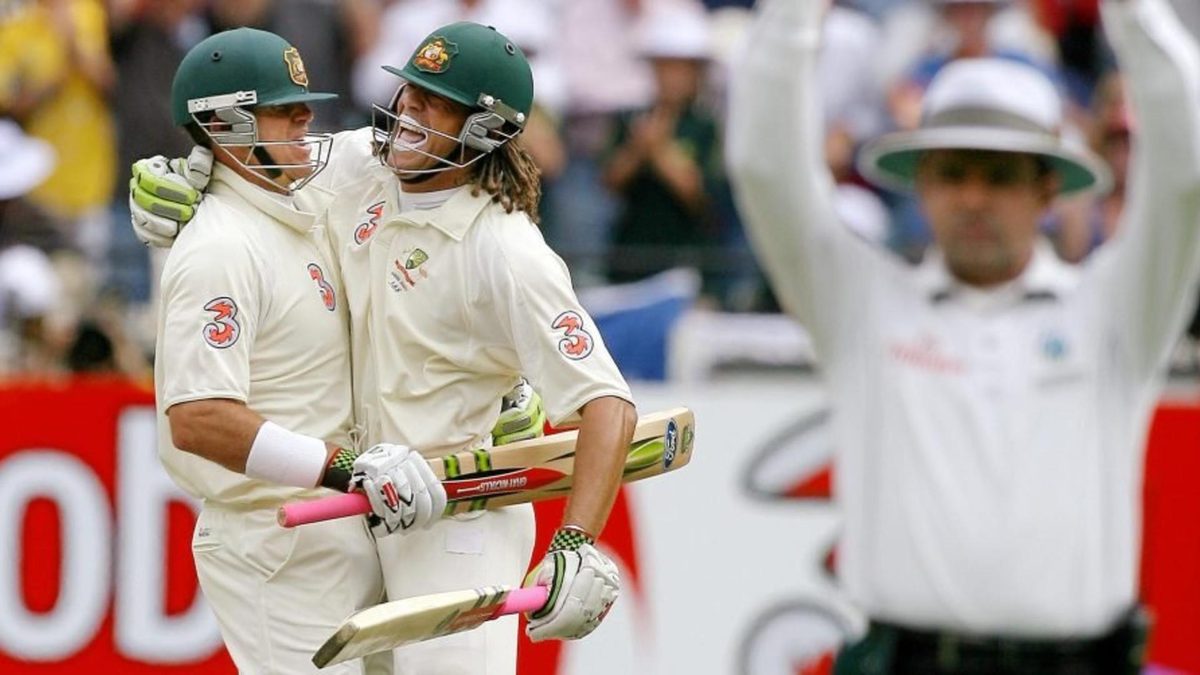
Looking back at six Test pairs who batted together only briefly, but enjoyed a successful partnership, making us wonder what could have been if they played more alongside each other.
Subscribe to the Wisden Cricket YouTube channel for post-match awards, player interviews, analysis and much more.
Test cricket has seen several iconic pairs who batted together for years, scoring runs aplenty in the format. At the other end of the spectrum are pairs who, for various reasons, batted together only for a small period, but still managed to string together big, match-shaping partnerships.
A look at six such stands from post-2000, all of whom batted together at least twice (but not more than four times), enjoying at least two 100-plus Test stands together.
Owais Shah, Andrew Strauss
3 innings, 366 runs @ 366.00, 3 100s, HS: 153
Owais Shah earned a surprise debut when Alastair Cook fell ill ahead of the 2006 Mumbai Test, but played only five more Tests across three years. Batting at three in his first game, Shah exhibited his proficiency against spin bowling, hitting 88 & 38 in England’s 212-run win. Three years later, on his comeback, he scored a half-century (his final one) in the West Indies.
A common factor in all three innings was opener Andrew Strauss, along with whom Shah stitched three 100-run stands, two of which were unbroken. Strauss scored a century in all three innings.
Despite three massive stands with the then England captain, Shah’s Test career fizzled out soon after.
Darren Lehmann, Ricky Ponting
4 innings, 604 runs @ 151.00, 3 100s, HS: 315
The fact that a player of Darren Lehmann’s calibre couldn’t consistently find a place in the Australian Test team speaks volumes of the quality of the Australian side back then. Lehmann played 27 Tests, but was especially prolific in his stands with Ricky Ponting: the duo enjoyed a bumper partnership in 2003/04, when they smashed three 100+ stands in the four innings they played together.
The first one was a triple century stand for the third wicket in West Indies, when Ponting notched up his double ton and Lehmann hit 160. It was followed by a double-century stand in Colombo, when Lehmann earned the Player of the Match award for his 153 in the first innings.
However, with Michael Clarke’s emergence, Lehmann’s position became vulnerable, and by the end of 2004, his Test career had wrapped up.
Corey Anderson, Brendon McCullum
3 innings, 319 runs @ 106.33, 2 100s, HS: 179
Anderson is remembered more for his white-ball exploits (including then then-fastest ODI century). His Test career wasn’t too bad either, and he started off strong, scoring a century in only his second game.
Twice Anderson combined with McCullum for big stands: one against India in 2o14, when McCullum scored a double century, and another two years later, as a sidekick to the wicketkeeping great in his final Test. Incidentally, when McCullum retired in 2016, Anderson’s Test career froze as well.
Ian Bell, Graham Thorpe
2 innings, 300 runs, 2 100s, HS: 187*
When a young Bell emerged on the scene, Thorpe’s Test career was on its last legs. But the two stylish batsmen, 12 years apart, combined briefly for two fine, unbeaten partnerships in 2005, both against Bangladesh.
Thorpe was a supporting hand as Bell scored his first Test century in Chester-le-Street, combining with the senior teammate for an unbeaten 187-run stand. A month later, Thorpe announced his Test retirement after missing out on a place in the 2005 Ashes squad.
Mohammad Hafeez, Mohammad Yousuf
3 innings, 414 runs @ 138.00, 2 100s, HS: 177
The two Pakistan run-machines combined in Test cricket only thrice, probably because Hafeez’s career took time to get going. The first instance was during the acrimonious Oval Test of 2006, when Hafeez’s 95 was overshadowed by a fine 128 from Yousuf, with the two putting together 177 runs.
An 88-run stand against West Indies followed, and in their third (and final) innings together, Hafeez and Yousuf put on 149 for the third wicket, with the latter scoring a century in both innings. Yousuf retired in 2010, while Hafeez left the format in 2018.
Matthew Hayden, Andrew Symonds
3 innings, 414 runs @ 110.75, 2 100s, HS: 279
Symonds’s topsy-turvy Test ride saw him bat alongside Hayden only four times (in four different years), but their partnership proved to be a fruitful one in the brief window. The first was against South Africa in 2005, when Hayden’s century at the top was supported by Symonds’ 72 at No.6 in the third innings of the Melbourne Test.
Exactly one year later, Hayden and Symonds, great friends on and off the field, put on a massive 279-run stand against England, helping Australia recover from 84-5 to 363-5. Symonds notched up his maiden Test hundred, which helped lay the platform for an innings win. Symonds’ controversy-filled career stuttered to a stop in 2008, and Hayden retired a year later.








